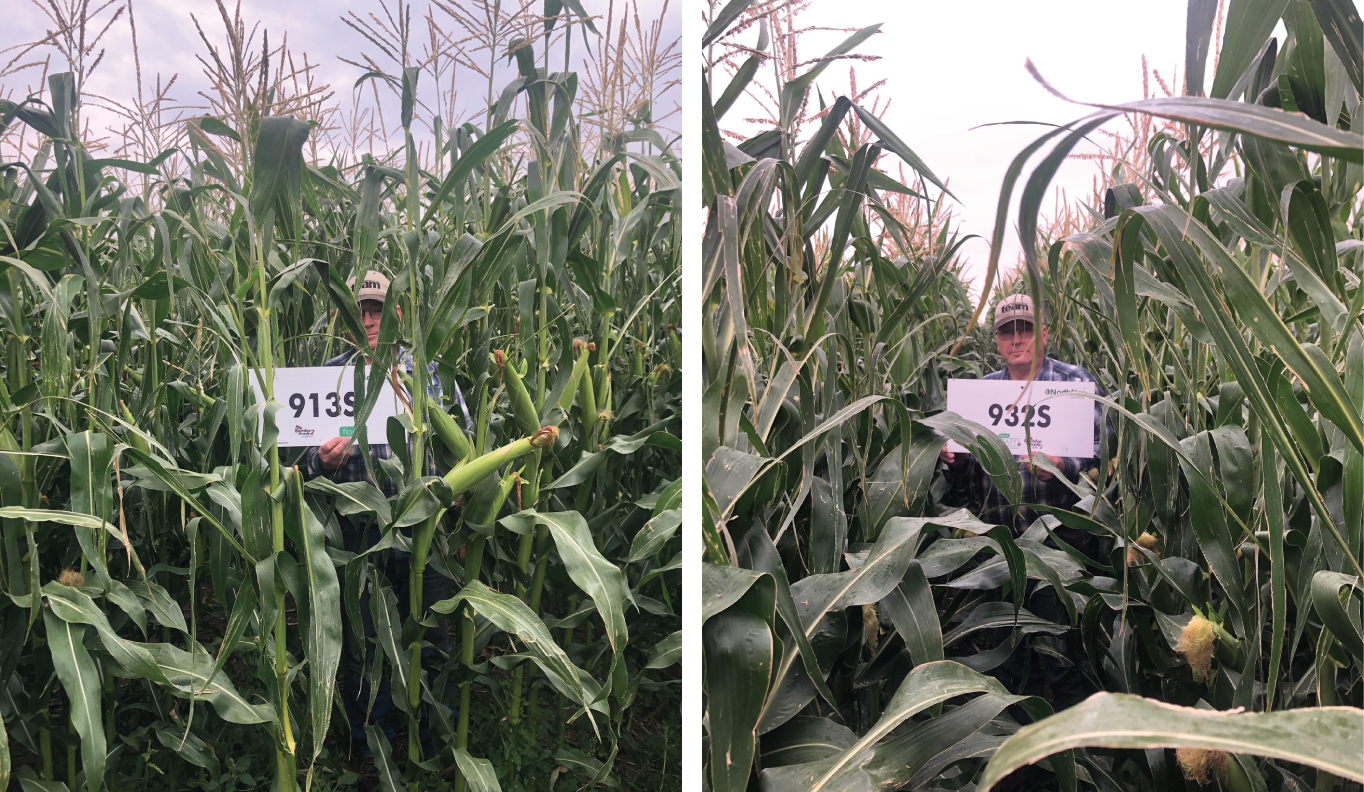The Corn Silage Harvest

By Ron Friesen
Agronomists agree there are two steps involved in harvesting high-quality corn silage. First, determine if the corn has the correct moisture content. Second, make sure to harvest the crop in a timely manner.
The first step is fairly straightforward. The second — hitting the harvest window at the right time — can be more difficult.
“Unfortunately, in Manitoba we tend to wait way too long or whenever it’s convenient in terms of harvesting corn silage,” says Dieter Schwarz, Corn Product Line Manager for NorthStar Genetics. “More often than not, silage corn will be ready when we’re harvesting other crops on the farm.”
There are two ways of solving the problem, Schwarz says. Have harvesting equipment, either yours or somebody else’s, available to cut corn when it’s ready for ensiling. Or grow varieties that are specially bred for silage.
Timing is critical for ensiling corn at the correct whole-plant moisture (WPM) level and prime stage of maturity, says Tyler Russell, NorthStar’s Western Canadian Manager. Too dry and the silage will pack and ferment poorly. Too wet and water will seep out of the silage bunk, taking nutrients with it.
A simple test called kernel milk-line can help growers determine when to harvest corn silage, Schwarz and Russell say. Wait between 42 and 47 days after the corn begins silking. Then take a cob, break it in half and examine the whitish line seen on the kernels. This is where the solid and liquid parts of the kernel are separated while maturing and drying. Run a thumbnail down the kernel from the inside of the cob to the outside. When the milk-line reaches the cob, a black layer is visible. At that point, the milk-line is 100 percent. If you get halfway down before the kernel gets soft, that’s 50 percent milk-line and the corn is around 65 percent WPM, depending on the variety. Traditionally, harvesting is recommended when the milk-line is between one-half and two-thirds.
Both Schwarz and Russell urge growers not to harvest corn silage outside the optimal range of moisture and maturity. Concentrate on harvesting at the correct moisture to get the best result.
“You’ve got to be on the ball. You’ve got to cut it at the right time,” says Russell.
The challenge is that much of the corn silage harvesting in Manitoba is done by custom harvesters. What do you do if the corn is ready but the harvester isn’t available for weeks?
“Have a really good relationship with your custom harvester,” Schwarz says. “Make sure they understand that timing is everything and they get there when you need them. That would be our advice short of buying all your own equipment.”
The other approach is to choose silage-specific hybrids that dry down more slowly and give growers a wider harvest window, adds Russell.
He says NorthStar Genetics has silage-specific corn hybrids. These are floury leafy hybrids with softer kernels designed to produce silage or grazing corn. This contrasts with traditional dual-purpose hybrids, which have harder kernels and are used for grain as well as silage.
NorthStar Genetics recently launched a family of new silage-specific floury leafy corn hybrids. Leafy hybrids grow more leaves above the ear and produce more digestible plant matter. Floury kernels are softer kernels with more available starch. More digestible starch in the rumen leads to more milk in dairy cows. Beef cattle consuming these hybrids can also experience a greater average daily gain.
While traditional dual-purpose grain hybrids still dominate the market, more growers are starting to look at floury leafy hybrids, which are better suited for silage and also offer a broader harvest window. That makes choosing the right hybrid critical, Schwarz says.
“A silage-specific corn hybrid will give you the widest harvest window and make it easier to time your corn silage harvest.”



